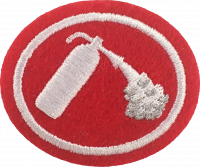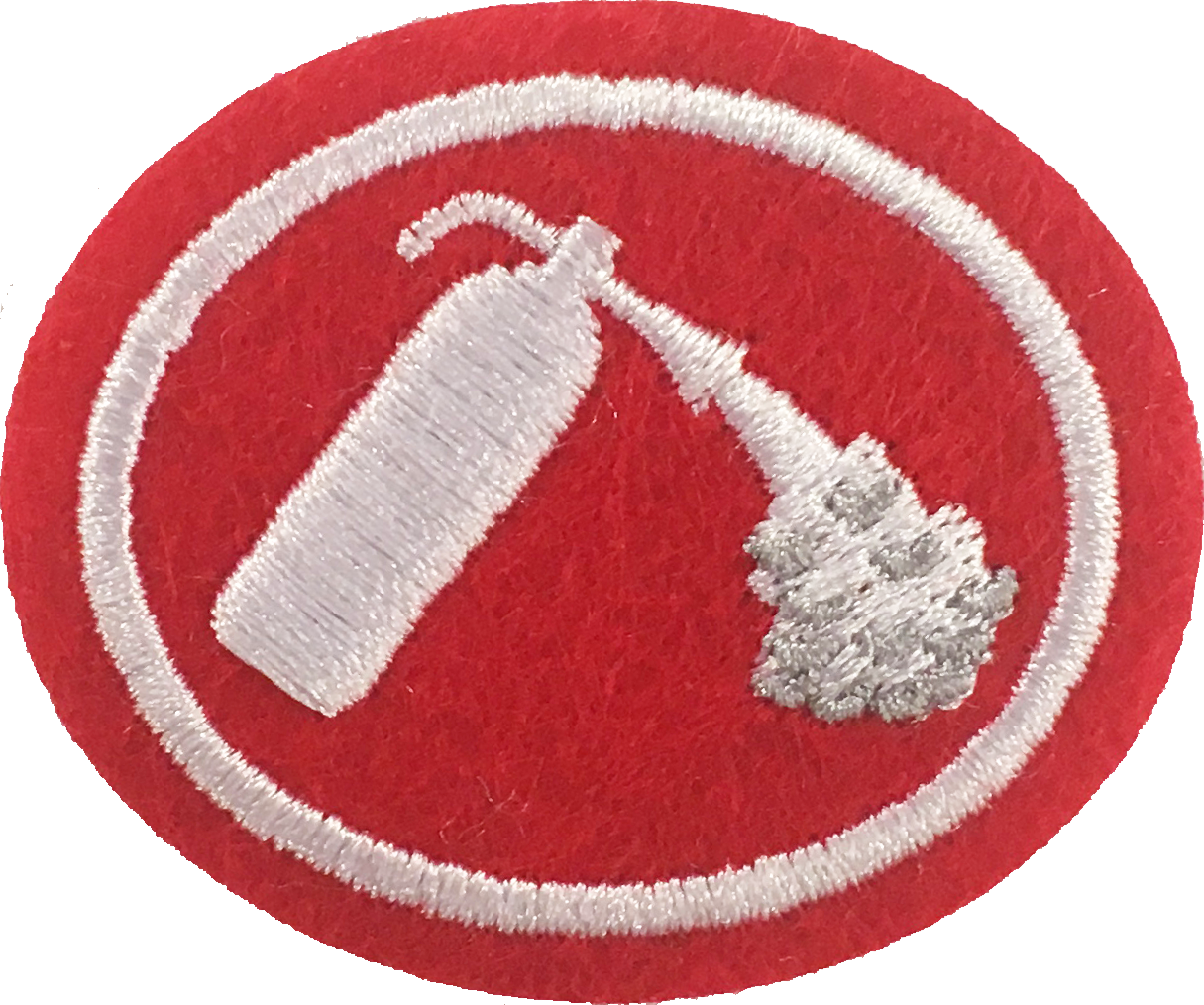Especialidades JA/Seguridad ante incendios/Respuestas
Nivel de destreza
1
Año
2012
Version
29.09.2025
Autoridad de aprobación
Asociación General
1
Para consejos e instrucciones, véase Alerta roja.
2
3
4
4a
4b
4c
4d
5
5a
- Class A
- Class A fires are fires with fuels that are normal combustibles. These include wood, clothing, etc. They can be extinguished many different ways. Common extinguishing methods include water. Extinguishers that can be used to extinguish Class A fires are A and ABC extinguishers.
- Class B
- Class B fires are fires that involve fuels including oil, gas, kerosene, etc. These fires require more effort and much different methods to put them out. Common extinguishing methods are B and ABC extinguishers. However, if not available, any soil not soaked in the above liquids will do.
- Class C
- Class C fires are fires that involve electricity. It can have any fuel. It is best to put this fire out by first shutting off the source of electricity. This turns the fire into either a Class A, B, or K fire, which can then be put out as prescribed for each class.
- If the power cannot be turned off for some reason. Use B, C, or ABC extinguishers. DO NOT USE WATER! YOU WILL BE ELECTROCUTED! After extinguishing the fire, you still have the issue of dangerous electrical current to deal with, along with the possibility of the fire reigniting. Call proper authorities immediately if the problem cannot be solved.
- Class D
- Class D fires are combustible metals. These burn because of chemical interaction. An example of this would be sodium and water. Sodium reacts violently when water is introduced. Class D extinguishers vary for each combustible metal. If you have a combustible metal in a work environment, OSHA (in the United States) requires that you have the proper extinguishing agent on hand to deal with any combustion. Never use water to extinguish Class D fires. There are safer methods of extinguishing, such as Class D extinguishers.
- Class K
- Class K fires are a newer classification used specifically for cooking oils. Water should not be used to extinguish Class K fires. Oil floats on top of water and the reacts violently with the cold water, splashing everywhere, thus spreading the fire beyond the original confines of a pot or pan. Class K extinguishers are available. However, often an extinguishing system is used instead of an extinguisher for Class K fires.
- Fire Blanket
- There should be one of these in every commercial kitchen. For controlling cooking oil and fats on fire. Also for wrapping a person on fire after they have Stopped Dropped Rolled.
- Fire Hose
- Some buildings have fire hoses for use on sold materials. Be aware to keep away spray from live electrics.
5b
The instructor should be certified or at least work in an area that utilizes fire extinguishers often (such as an inspector or firefighter). The fire should be no bigger than one (1) cubic foot in size and should be in a safe area (like an empty parking lot). The acronym used for teaching the use of a fire extinguisher is PASS (Pull, Aim, Squeeze, Sweep). Other countries may have their own acronyms for this. In New Zealand we use PTASS. Much the same as below with the added T= Test. Before you approach fire do a short test squeeze to ensure your extinguisher actually works.
- Pull the pin (sometimes a safety tab to keep the pin from falling out must be broken first).
- Aim the nozzle at the base of the fire.
- Squeeze the handle of the extinguisher to start spraying the extinguishing agent.
- Sweep the nozzle at the base of the fire until certain the fire is out.
5c
You should always be facing the fire on your approach and retreat. This is so you can prepare for any sudden flare-ups. Also be aware that your extinguisher will only last about 60 seconds. If your you cannot get to within 2 or 3 metres of the fire base it is too big your you to attempt to put out. So this is why all doorways and stairs should be free of items that could trip you. Also consider that the room you are entering will have smoke covering the ceiling making any lighting ineffective. This layer of smoke will gradually become thicker and closer to the floor as the fire burns.
An escape route for yourself is extremely important to keep in mind when attempting to fight or extinguish a fire. If you become trapped while trying to be heroic, you have not helped emergency personnel. Instead, you have added to the things they must do. Now they have to find and try to save you as well as fight the fire.
5d
6
- a. El templo
- b. La escuela
- c. Otro edificio público
7
- Obtain the proper fire permits as required in your area.
- Clear a ten (10) foot area around the entire fire ground. Nothing should be in that ten-foot area. No trash, no leaves, no branches, and no contaminated earth. Let nothing that can burn be left in this area.
- Have enough extinguishing agent (water, dirt) nearby to completely extinguish the fire at its largest volume. Stir the coals to smother the fire on all sides.
- Do not use gasoline or other flammable liquid to start the fire.
- Do not allow children or adults to play with the fire once it is started.
8
8a
8b
8c
9
9a
When you pass through the waters, I will be with you;
And through the rivers, they shall not overflow you. When you walk through the fire, you shall not be burned,
Nor shall the flame scorch you.
9b
Even so the tongue is a little member and boasts great things.
See how great a forest a little fire kindles! And the tongue is a fire, a world of iniquity. The tongue is so set among our members that it defiles the whole body, and sets on fire the course of nature; and it is set on fire by hell.


